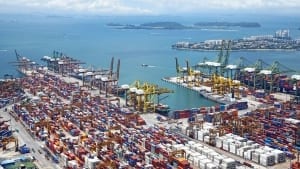Tech Talk: Server Types

So, let’s begin by defining what each type of server is…
Rack servers – A rack server is often also referred to as a rack mount server. In essence, it is a standard sized network that has been designed so that it can be mounted to rack frame infrastructure or a data centre server cabinet.
Blade servers – A blade server is often described as a stripped down version of the former. This type of server is absent of an array of components found within standard rack servers.
By merely assessing the definitions of both options you have probably already picked up on one main advantage a blade server has over a standard rack server. This is the fact that it makes much better utilisation of space. Data centres using blade servers have the possibility to reach optimal efficiency on this front. You can find more information on this website about the sort of tech businesses that have these key decisions to make.
Nevertheless, one of the main disadvantages associated with blade servers is that the start-up costs are a lot larger in comparison to other options. This can present a significant problem for businesses who are just starting up and therefore do not have the luxury of a large budget. The reason why blade servers tend to cost more in the beginning is because you will require some initial infrastructure which is not needed with any other type of server, such as the chassis.
Another issue a lot of people have noted is that blade servers are somewhat limited when it comes to I/O expansion options. This is because there is a lack of expansion slots. This expansion limitation is also represented in terms of disk drives (most are limited to two or four internal hard drives) and PCI/PCI Express slots. You don’t experience any of these issues when it comes to rack servers as they are very expandable.
However, one problem which does come your way if you opt for rack servers is cable management. It can be somewhat tricky to keep everything organised because you will have a wealth of different cables to keep under control. There are lots of products available for cable management to help you with this. But when it comes to blade servers the confusion and clutter is minimised substantially.
Finally, another advantage associated with blade servers is the fact that easier integration can be possible because of the fact that a blade enclosure utilises a single power supply. This of course further represents efficiency in terms of power usage. You may find that you have an opportunity to lower your costs and even improve your data centre in terms of eco-friendliness.
It is quite easy to see that there are pros and cons associated with both rack servers and blade servers. The decision you make all depends on your data centre requirements and what is more important to you. For instance, if space is a massive issue then you will more than likely want to go for blade servers.




